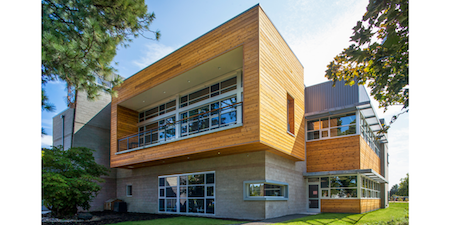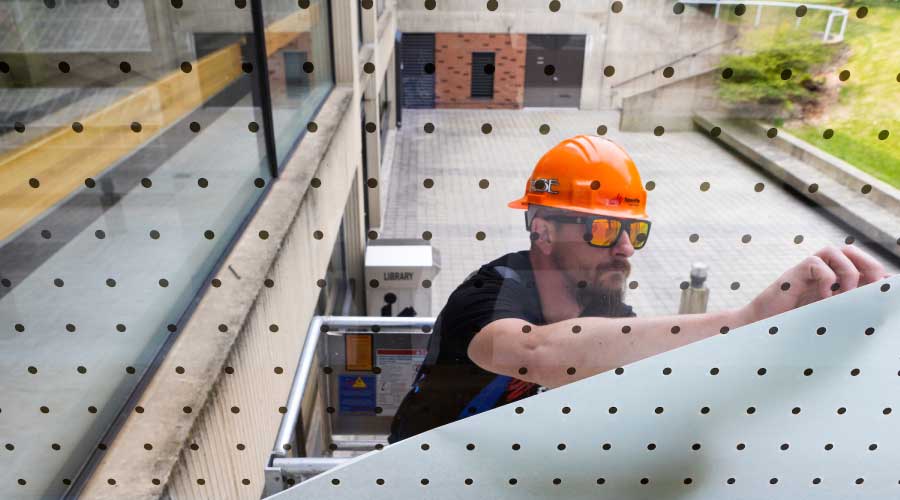 An addition to the Vernier Software and Technology building provides daylight and views, but avoids glare.Vernier Software
An addition to the Vernier Software and Technology building provides daylight and views, but avoids glare.Vernier SoftwareElectrochromic Glass Results in Energy Efficiency at LEED Certified Facility
An addition to the software and technology company's headquarters building offered an opportunity to try electrochromic glass. Results have been spectacular.
When Vernier Software & Technology decided to build a nearly 15,000-square-foot addition to its LEED O+M Gold building, the company faced a common design quandary: providing daylight and views, but avoiding glare and excess heat. Vernier also had a not-so-common goal. “Our objective was to showcase some of the latest (building) technology available,” says John Nearman, facilities manager. Vernier is a software and technology company, and it planned to use part of the addition as classroom space to educate its customers — STEM teachers — about its own technology. Having a high-tech building made sense.
Vernier decided to install electrochromic glass. Along the way, it learned a few lessons that may be useful to other facility managers considering the technology.
During the design process, Vernier was “keenly aware” of the importance of energy performance to meet the Energy Star standards incorporated into LEED, says Nearman. At the same time, he says, “we wanted to maintain views and deliver light into the core of the space as much as possible.” That led to the expansive use of glass, but made it important to control light levels and solar gain. The building with the addition was certified LEED EB O+M Gold under LEED v2009 in 2016.
Nearman says the smart glass has met Vernier’s expectations. The tint level of the electrochromic glass is controlled by sensors on the exterior of the building. “The electrochromic glass really provides the best of both worlds for us,” Nearman says. “Here in Oregon, the skies can remain a variant of gray for six months of the year,” he says. As a result, some employees prefer to have less tinting than the control system provides based on the amount of light outside. To address that issue, each room has controls that can override the automatic tint setting.
While Nearman says that the smart glass has performed well, the installation wasn’t as simple as it would have been with ordinary glass. The controls for the glass had to be tweaked. There was also a need for more project coordination. “Glazing and electrical contractors don't usually interface directly together, but they definitely need to with electrochromic glass. Finally, there was an element of employee education. “Everybody thinks, oh, you flip and switch and the glass turns dark,” Nearman says. “And it’s not quite as fast a process as that. It probably takes ten minutes to fully transition from lightest levels to darkest levels.”
Related Topics:












